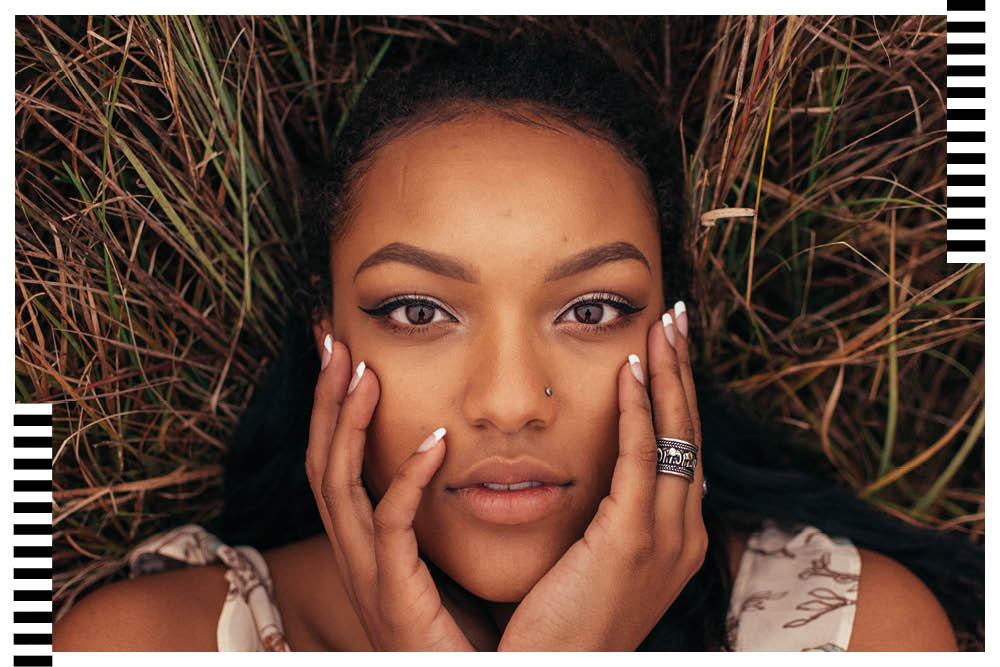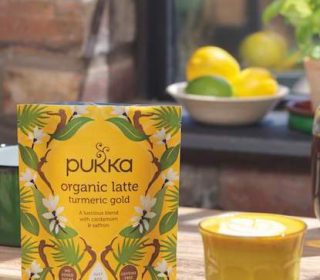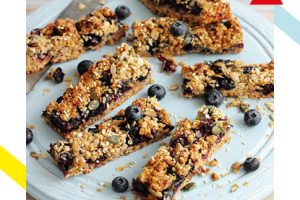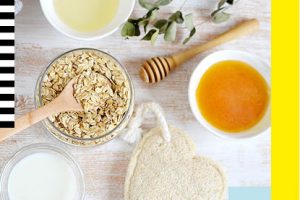5 Food Types to Avoid for Clear Skin

For clear skin, what we eat is absolutely vital. Plenty of water, a good balance of omega oils and lots of plant-based foods containing vitamins and nutrients help to achieve clear skin. But what about foods we should avoid?
Let’s consider the very real impact that what we eat can have on our skin. Chronic complaints such as psoriasis, eczema or rosacea shouldn’t just be thought of as skin conditions – think of them as gut conditions, the symptoms of which you see on the surface of the skin.
Good gut health is absolutely vital when it comes to getting to the root cause of skin issues. We have trillions of bacteria in our gut and they directly control the condition of our skin.
The role of our gut and its connection to both our brain and skin has been talked about for a very long time. In fact, 70 years ago, two dermatologists, John H Stokes and Donald M Pillsbury, first suggested an overlapping correlation between the gut and mood disorders such as anxiety and skin conditions. Way ahead of their time, these doctors proposed that emotional states might alter the normal gut microbiome, resulting in intestinal inflammation and permeability (commonly referred to as ‘leaky gut’), and contribute to systemic inflammation.
An anti-inflammatory diet focuses on lots of fruits and vegetables, foods containing omega-3 fatty acids, whole grains, lean protein, healthy fats, and spices. It recommends limiting the consumption of processed foods, red meats and alcohol.
Limit these food groups if you’re having problems achieving clear skin:
1. SUGAR
Cutting out refined sugar is key. And simply reducing the amount we add to our tea is not enough. It’s important to read ingredient labels, because refined sugar sneaks in under so many names; high fructose corn syrup, table sugar, cane sugar, and fructose – to name just a few.
If you suffer from a chronic skin condition, it might be best to avoid sugars altogether, certainly through an initial period of healing. However, if you absolutely cannot live without a sweet snack, natural sweeteners such as raw honey, maple syrup, apple sauce or agave nectar are better choice, low glycemic sweeteners. This means they may have a less intense impact on blood sugar levels and are not as likely to trigger skin flares and sensitivities.
2. REFINED CARBS
Carbohydrate rich foods include bread, pasta, cereal, crackers and doughy desserts. Studies show that people who frequently consume a large amount of cakes and pastries increased their risk of developing acne by 20%. This might be explained by the blood sugar and insulin spikes created when we eat refined carbohydrates. They’re absorbed quickly into the bloodstream making hormones more active and boosting sebum (oil) production. This in turn can wreak havoc on clear skin by clogging pores, which in turn causes the forming of pimples and blackheads.
To avoid problematic insulin spikes, opt for more complex carbohydrates and wheat-free grains such as spelt, amaranth, buckwheat and quinoa, which are low glycemic and will have less of an impact on blood sugar levels.
3. DAIRY PRODUCTS
Dairy products such as cheese, milk, butter and cream are considered pro-inflammatory foods. These can most definitely aggravate or worsen existing inflammatory skin conditions. Cow’s milk also contains amino acids, which stimulate the liver to produce more IGF-1, a growth hormone that’s linked to the development of acne.
It’s estimated that 75% of the world’s population is intolerant to lactose (the sugar found in dairy) and most of us aren’t even aware that we’re sensitive to it. Repeatedly consuming foods we can’t digest properly, can lead to longer-term digestive conditions. Food allergies and sensitivities can also trigger an inflammatory response, flaring pre-existing chronic skin complaints.
Thanks to the rise of veganism, dairy alternatives are plentiful these days. Replacing dairy with unsweetened nut milks and creams, such as coconut, almond or hazelnut, offers hormone, antibiotic and lactose-free substitutes, which will have less of a detrimental impact on the liver and digestive tract.
4. PROCESSED AND JUNK FOODS
When we eat too much processed food, we begin to lack the nutrients our body’s need to function efficiently. This leaves skin cells looking dry and depleted. Most fast food meals are deep-fried in refined vegetable oils such as canola, which is loaded with trans-fats. While ‘vegetable oils’ may sound deceptively healthy, they can aggravate skin conditions because they’re extremely high in omega-6 essential fatty acids.
This might sound confusing because Omega oils are considered to be healthy, but problems can arise when we have too many omega-6s and too little omega-3s in our diet. Omega-3s are natural anti-inflammatories and without them our bodies are more likely to show common signs of inflammation such as itching, redness and swelling.
Sometimes it seems impossible to avoid convenience foods, but fortunately more nutritious fast food restaurants are springing up, such as juice and salad bars. If you know in advance that you’ll be eating on the move, avoid junk food altogether by keeping healthy snacks such as protein bars, nuts, seeds and fruit to hand.
5. INDIVIDUAL SENSITIVITIES
We are also susceptible to individual food sensitivities. These can occur when our immune system mistakenly identifies a particular food as a threat and launches an attack against it. This perceived enemy causes high levels of pro-inflammatory molecules to circulate which can aggravate sensitive skin and often results in the redness and flare-ups we see on the skin’s surface.
This is where an elimination diet can work really well. It can take a little trial and error and requires extra patience, but it works by temporarily restricting food groups in order to eliminate triggers and achieve symptomatic relief. The idea is to then gradually add foods back in while tracking symptoms and looking for notable correlations. Try keeping a food journal to get to the root cause of those irritating flares.
Skin Healing Expert: Your 5 pillar plan for calm, clear skin by Hanna Sillitoe, published by Kyle Books, is available to buy now









